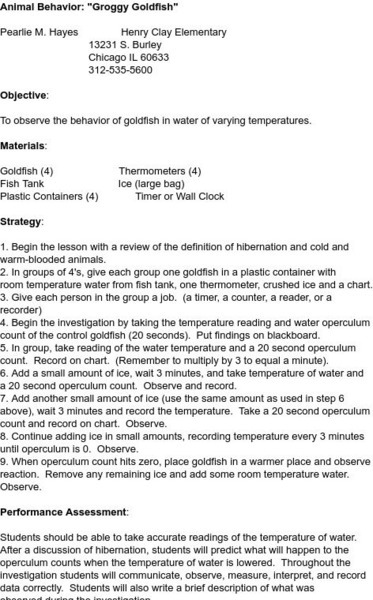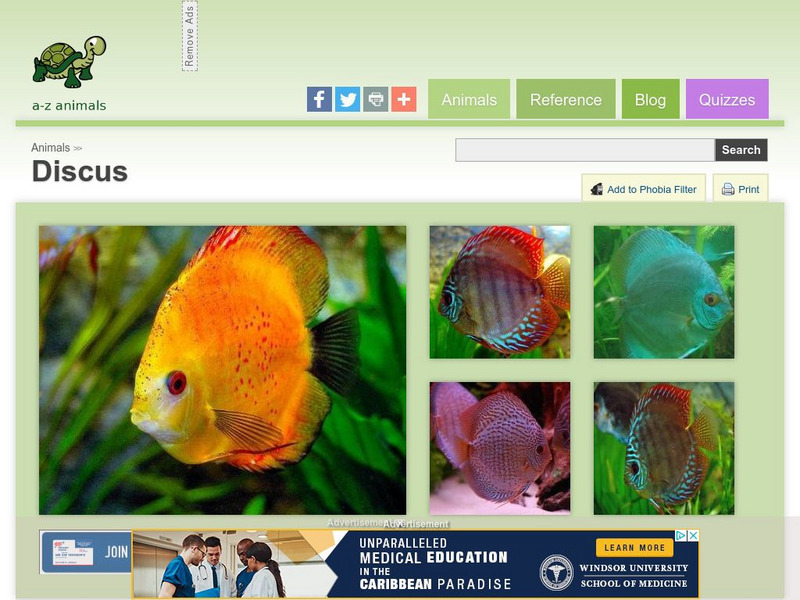Hi, what do you want to do?
Curated OER
Biomes: Freshwater & Seawater
Students observe organisms behavior and adaptations. In this biomes activity students conduct fieldwork to determine water quality and answer questions about the differences between different habitats.
Curated OER
Are There Too Many Elk?
Students use information about elk populations in Arizona to make recommendations about population management. For this ecology lesson, students discover the problems associated with having a heard of elk that is too large. After...
Curated OER
Barnacles: Harder than Cement
Fourth graders watch the movements of the complex animal hidden inside the tiny barnacle shells. This lesson allows students to study the behavior, adaptation, and larval stage of the barnacle.
Curated OER
It Takes All Kinds!
Students view video clips and observe similarities and differences between animals. They sort animals into groups for a zoo. They make a graph of their observations and review scientific classifications.
Curated OER
From Polliwog to Frog
Students examine how frogs change. In this life cycle activity, students create a model to show how a frog changes throughout its life. Students will show the process of frog metamorphosis, from polliwog to adult frog.
Curated OER
Top 10 Aerospace Lesson Plans
You can use these exciting aerospace lesson plans to supplement nearly any unit in your science curriculum.
Curated OER
Are There Too Many Elk?
Students study elk populations in Arizona. In this data lesson students read an article on monitoring elk populations, analyze data and make management recommendations.
Curated OER
Bats
Students model how the bones in a bat wing are organized. They develop questions about bat body parts based on photographs. They hypothesize how bats locate their food.
TED Talks
Ted: Ted Ed: How Do Schools of Fish Swim in Harmony?
Nathan S. Jacobs explains the concept of emergence, the spontaneous creation of sophisticated behaviors and functions from large groups of simple elements. [6:07]
PBS
Pbs Learning Media: Scent of an Alewife
This video segment from NOVA: "Sea Behind the Dunes" tracks the return of spawning alewife fish from the open ocean back to the freshwater streams and ponds where they were born. [3:34]
Science and Mathematics Initiative for Learning Enhancement (SMILE)
Smile: Animal Behavior
Lesson plan that allows students to investigate the effect of water temperature on fish behavior. Students measure, collect data, and interpret the results.
Royal Canadian Geographical Society
Canadian Geographic: Animal Facts: Rainbow Trout
explore fast facts, physiology, habitats, behaviors, and range of the rainbow trout.
CK-12 Foundation
Ck 12: Third Grade Science: Life Sci: Animal Characteristics and Classification
[Free Registration/Login may be required to access all resource tools.] Presents an overview of the major animals groups (mammals, birds, reptiles, amphibians, fish, arthropods, vertebrates, invertebrates, those having live births and...
A-Z Animals
A Z Animals: Animal Facts: Discus (Symphysodon)
Presents an overview of the Discus, including its habitat, appearance, behavior, breeding, diet, conservation status, and much more. Images of this species and statistics can also be found here.
Royal Canadian Geographical Society
Canadian Geographic: Animal Facts: Atlantic or Pacific Salmon
Learn fast facts, the physiology, habitats, behaviors and range of the Atlantic or Pacific salmon.
Royal Canadian Geographical Society
Canadian Geographic: Animal Facts: Tundra Swan
Learn fast facts, the physiology, habitats, behaviors and range of the tundra swan.
Regents of the University of Michigan
Animal Diversity Web: Ray Finned Fish
Comprehensive reference material on ray-finned fishes, with information on their habitat, evolution, physical features, eating habits, reproduction, behavior, how they communicate, role in the ecosystem, and threats to their continuing...
PBS
Pbs Teachers: Scientific American: The New Zoos: Tuna in the Tank
Investigate how scientists track the world's most valuable and endangered fish. Define the range of an individual based on observations made over the course of a day.


















